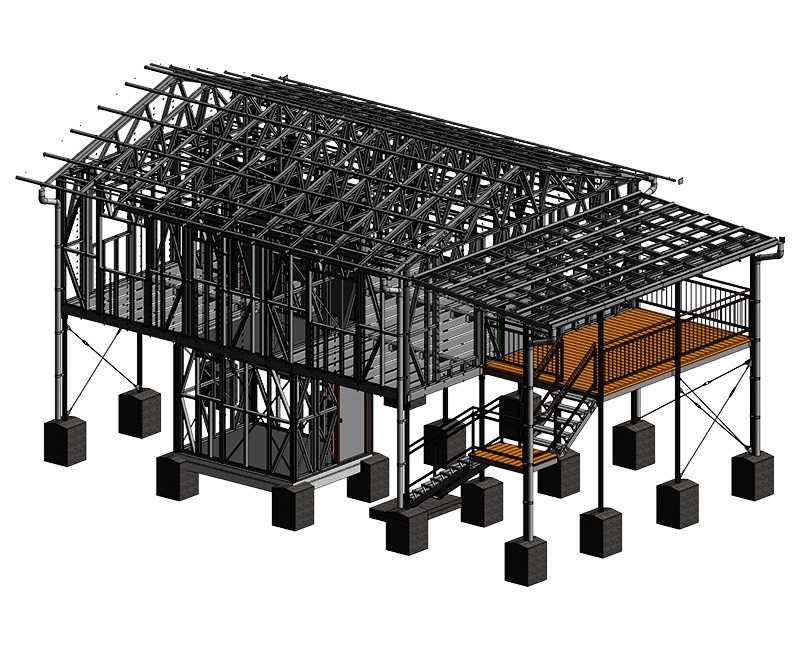In today's rapidly evolving construction landscape, efficiency is paramount. From conceptualization to completion, every phase of a construction project demands meticulous planning, precise execution, and streamlined communication. Building Information Modeling (BIM) has emerged as a transformative technology, revolutionizing the way construction projects are designed, managed, and constructed. Within the realm of BIM, structural modeling services play a pivotal role in maximizing efficiency and ensuring the success of construction endeavors.
Understanding BIM Structural Modeling
BIM structural modeling involves creating a digital representation of a building's structural elements, such as beams, columns, slabs, and foundations, within a collaborative 3D environment. Unlike traditional 2D drawings, BIM models are intelligent and contain rich data attributes, enabling stakeholders to visualize, analyze, and simulate various aspects of a structure's behavior and performance throughout its lifecycle.
Enhancing Collaboration and Communication
One of the primary advantages of BIM structural modeling services is the facilitation of seamless collaboration among project stakeholders. By centralizing project information within a shared digital environment, architects, engineers, contractors, and other team members can collaborate in real-time, fostering better decision-making and reducing the likelihood of errors and conflicts.
With BIM, structural engineers can collaborate more effectively with architects to optimize designs for both structural integrity and architectural aesthetics. Changes made by one discipline are automatically reflected in the model, ensuring that all parties are working from the latest information. This level of integration enhances coordination and minimizes rework, resulting in significant time and cost savings.
Streamlining Design and Analysis
BIM structural modeling enables engineers to conduct comprehensive analyses of a building's structural performance with greater accuracy and efficiency. Through advanced simulation tools integrated into BIM software, engineers can assess factors such as structural loads, wind and seismic forces, and material properties to ensure that the design meets safety and performance requirements.
Additionally, BIM allows for early detection of clashes and interferences between structural elements and other building systems, such as MEP (mechanical, electrical, and plumbing) systems. By identifying and resolving conflicts during the design phase, potential delays and costly modifications during construction can be avoided, leading to smoother project delivery.
Optimizing Construction Planning and Execution
During the construction phase, BIM structural modeling serves as a valuable tool for optimizing planning and execution. Through the creation of detailed 4D and 5D simulations, which incorporate time and cost data into the BIM model, project teams can visualize the construction sequence, identify potential schedule conflicts, and accurately estimate project costs.
Furthermore, BIM facilitates the generation of fabrication and construction drawings directly from the model, reducing the time and effort required for manual drafting. This automation not only accelerates the documentation process but also minimizes errors and discrepancies that can arise from manual data entry.
Supporting Facility Management and Maintenance
Beyond the construction phase, BIM structural models continue to deliver value by supporting facility management and maintenance activities throughout the building's lifecycle. By integrating asset information such as equipment specifications, maintenance schedules, and warranty details into the BIM model, facility managers can efficiently track and manage building assets, optimize maintenance workflows, and make informed decisions to prolong the lifespan of the structure.
Additionally, BIM can facilitate the implementation of predictive maintenance strategies by leveraging sensor data and historical performance data stored within the model. By predicting potential equipment failures and scheduling maintenance proactively, facility managers can minimize downtime, reduce operating costs, and enhance the overall reliability of building systems.
Conclusion
In an era where efficiency is paramount, BIM structural modeling services emerge as a game-changer for the construction industry. By leveraging advanced technology to create intelligent digital representations of building structures, BIM enables stakeholders to collaborate more effectively, streamline design and analysis processes, optimize construction planning and execution, and support facility management activities throughout the building lifecycle.


No comments yet